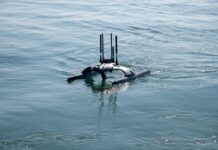Central to European security and NATO’s agenda, the Black Sea region witnessed decades of conflict and unrest, marked by persisting historical rivalries, unrecognised territorial entities, and complex security threats. As the power game is still unfolding, both NATO and the European Union are developing new strategies to counter Russia’s military and non-military offensive instruments.
The Black Sea is surrounded by six countries (Ukraine to the north, Russia and Georgia to the east, Turkey to the south, and Bulgaria and Romania to the west), out of which only three are NATO members and only two are EU member states. A crossroads for Europe, Asia and the Middle East, the Black Sea has emerged as a vital route for the movement of energy to Europe. With democracy backing up from the west edge, the Chinese financial offensive active from the east, Russian military struggle threatening from the north and instability coming from the south, the Black Sea Region is indeed a potential hot spot. The region only gained its place in the first lines of the global strategic agenda in the first decade of the twenty-first century after several key events: Bulgaria and Romania joined NATO and the EU in 2007, the Russia-Georgia War of 2008, the coloured revolution in Ukraine in 2013, and Russia’s invasion of Crimea in 2014, the recent uprising in Belarus and finally Nagorno-Karabakh conflict of 2020.
While the region hides as many opportunities as possible for further cooperation and development, the Black Sea continues to dive in the same dangerous power game of global and regional actors. Bearing in mind the global challenges of our current times, this article aims to provide an assessment of the ongoing dynamics around the Black Sea and prospects for the region.
Sochi, September 2021
At the end of September, the Russian and Turkish presidents met for the first time in-person after the break-out of the Covid-19 era. The meeting took place in the Russian Black Sea city of Sochi, the “de facto capital” and President Putin’s favourite location for bilateral summits – a symbol of Russia’s preservation of Prince Gregory Potemkin’s 250-year-old legacy. In front of the press the two leaders discussed cordially the Covid-19 vaccine booster, and the superiority of the Russian Sputnik-V. Behind the close doors, President Erdogan and President Putin debated the developing bilateral cooperation, touching on important topics such as trade and collaboration for defence industry, regional issues, and future common projects for the two countries.
Among all the details released to the public, the most vital information for the Black Sea security comes from the common announcement that Russia and Turkey will collaborate in developing submarine and jet-engine technologies. While this can be seen as a balance to the similar military cooperation between Turkey and Russia, the underlying reasons and strategies behind the official projects is yet to be discussed. Still, Turkey’s dangerous game with Russia threatens the security and stability of the Black Sea Region, while all the other actors either observe from distance or take precaution in every action.
Neighbours in a Disguised Hot Spot
The dynamics of the Black Sea have always been tense, with neighbours calculating each action while determining the risk for every handshake. Russia has remained the “bully of the class”, trying to impose its position through calculated military and non-military offensive acts threatening the security and stability of the region. At a large scale, Russia sees the Black Sea region as a key element to its geoeconomics strategy, aiming to project Russian power and influence in the Mediterranean, protect its economic and trade links with key European markets, and make southern Europe more dependent on Russian oil and gas.
The Black Sea also provides the security buffer zone for Moscow to protect its boundaries from any kind of southern vulnerability. With a well-developed strategy and a bit of luck, by using the Black Sea as a springboard, Russia can further project power into the Middle East, the Balkans, and the Mediterranean — and strengthen its re-emergence as a great power. Although hard to believe, the Moscow is determined to use the Black Sea to gain further access in regions that are so-called NATO-dominated. The developing relation to Turkey resulting in Ankara’s estrangement from the West fits perfectly Putin’s plans for the future of the region, pointing out at both NATO and EU’s current vulnerabilities.
Turkey
On the other side, Turkey’s relations with Russia, have always been far from ideal, resulting into many direct and indirect confrontations and hostile competition, throughout time. While Ankara does not fully trust Moscow’s commitment to their common initiatives, Turkey aims to become a regional power. In this regard, the role of the “balance holder” in the Black Sea Region, and not only, is just one of the strategies developed by Ankara to create an equilibrium between US assertiveness and Russian resurgence in its near abroad. However, its struggle can easily turn into an increasing vulnerability to both sides and risk further volatility on several terrains.
While strongly opposing a large NATO presence in the region and claiming its potential to maintain maritime security in the Black Sea in cooperation with other NATO member and partner countries, as well as Russia, Turkey unintentionally contributed to Moscow’s strengthening its military build-up in the region after the annexation of Crimea. Moreover, for the sake of regional balance and trying to avoid further confrontation with Russia, Ankara refused the opportunity to regain its dominating naval presence in the Black Sea and did not join the anti-Russian EU sanctions.
Meanwhile, Turkey and Russia managed to come to common agreements in several frozen conflicts such as Nagorno-Karabakh. In this case, Turkey has always supported its brother country – Azerbaijan – against Armenia and has provided military training and weapons to Baku. On the other hand, Armenia, has benefited from Russian support due to its defence pact with Moscow and the presence of a Russian military base and Russian border guards. While the main fighting took place at a critical sport for Europe and Turkey’s energy security, Russia and Turkey proved their capacity to come up with an interim arrangement between them, temporarily ending the war, though not yet the conflict. Russian and Turkish management of the crises showed their awareness of the threat for escalation represented by these frozen conflicts and the potential to put at risk other regions of common interests for both sides.
In short, although Turkey does not always comply with EU and NATO policies in the Black Sea, and it plays a very dangerous game walking on a very thin line over an alligators’ trap, Ankara emerged as one of the balancers of Russia. What is debatable is for how long the Turkish government will be able to resist the pressure that comes from different sides, making it harder to sustain the balance.
Ukraine
Another neighbour on the Black Sea, Ukraine used to be known for its “maritime maturity”, in the past, and as a diversified maritime economic landscape made up of river transportation, shipbuilding, and a gas and oil industry. However, the past 25 years have marked a continuous decline for almost all of Ukraine’s maritime power and the country’s access to the Black Sea has already been severely restricted by the ongoing occupation of Crimea and Russia’s systematic disruption of Ukraine-bound shipping in the Azov Sea since 2018. Currently the commercial ports of Odesa, Mykolaiv, and Kherson serve as Ukraine’s economic lifeline to global markets. Moreover, Russia continues to threaten the maritime traffic and hit severely the country’s economy. While, Kiev has the support of the West and Turkey, the threatening actions coming from Russia’s side are not to be underestimated and the situation should be treated with caution.
Georgia
Alike Ukraine, Georgia has also witnessed the Russian aggressive policies and Moscow’s use of both military power and hybrid warfare instruments to further challenge any allies of the West in the Black Sea. In October 2019, the Russian Military Intelligence service (GRU) executed a disruptive cyber-attack on Georgia’s government servers, as one example of the Russian offensive that includes various malign actions such as disinformation, cyber-attacks, energy blockade, covert intelligence, and military activities. The final aim of these actions is to pressure Tbilisi against the West. While the NATO-Georgia cooperation is at target, strengthening Georgia’s “hybrid defence” capabilities is more important than ever. Since its occupation of Georgian territories, Russia has illegally deployed troops to Abkhazia, which lies on the eastern coast of the Black Sea. Further on, Moscow’s developing military build-up of forces on the Crimean Peninsula and the improved air and naval capabilities reflect Russian’s clear intentions to create an A2/AD zone in the Black Sea. Its actions are far from the traditional strategies of the past, as Kremlin pushes in offensive through every viable channel.
Romania and Bulgaria
The two EU member states on the ground, Romania and Bulgaria, are both post-communist democracies, who joined NATO in 2004 with the second wave of eastern enlargement after the Cold War. Due partly to its historical grievances towards Russia, Romania has been very vocal, calling for a stronger NATO response and it also became the first country to host a Patriot surface-to-air missile system in the Black Sea region. It also carries out regular rotational deployments of NATO forces. From 19 to 29 March 2021, Romania organised Sea Shield 21, a multinational NATO exercise. Romania’s commitment to fully support NATO against Russia’s offensive strategy has been proved since the country joined the Alliance. On the other hand, Bulgaria proved to be more cautious regarding Russia. For a long time, Moscow has taken advance of Bulgarian dependence on old Russian military technology and routinely penetrated Sofia’s defence sector, proving not only national vulnerabilities but also reflecting a weakness for the Alliance.
In March 2021, five former and current senior Bulgarian defence officials were charged with selling classified NATO information to Russia. Moreover, as part of Moscow’s asymmetric war strategy, Bulgaria is also a prime target of the Kremlin’s hybrid activity due to energy dependence and a strong Russian influence in its political realm. So far, Bulgaria has made significant steps against Russia’s offensive strategies, by updating its national security and defence strategies and inaugurating the Maritime Coordination Centre in Varna. Still, there is a long way ahead in building up Bulgaria’s resilience and the other members and partners support to reduce NATO’s vulnerabilities in the region.
Policy Recommendations for the EU and NATO
Just like in the context of the Baltic Sea, the Black Sea has no joint commander for peace and war to actively engage in the countering Russian challenges in the region. Nor are there suitably placed and focused regional joint headquarters for either the EU or NATO. NATO must create a supreme allied commander (SAC) for both regions — a SACBaltic and SACBlack Sea. In the same way, new steps to empower NATO’s presence on the ground can also benefit the EU’s position to increase the security and stability of the eastern neighbourhood. While being a strong advocate of NATO military and naval presence in the region, the EU should be more active in the region and cooperate with NATO on initiatives to increase intelligence- and surveillance-sharing, defence interoperability, operational cooperation and military mobility projects that can provide a multi-layered strategy to counter Russia’s continuous aggressions. Last, but not least, the EU has the potential if it is given the opportunity to engage on an active role in the economic cooperation in the region that can further enhance stability and security.
Today, more than ever before, NATO’s south-eastern flank needs to grow stronger and show no vulnerability on any side. Such a target can only be achieved through enhance collaboration between its members – Romania, Bulgaria, and Turkey – and its strongest partners in the region: Ukraine and Georgia. While understanding Russia’s “asymmetric bullying strategy”, the Alliance should be aware of its own strengths and enormous potential to create a better, more stable, and secure Black Sea Region.













